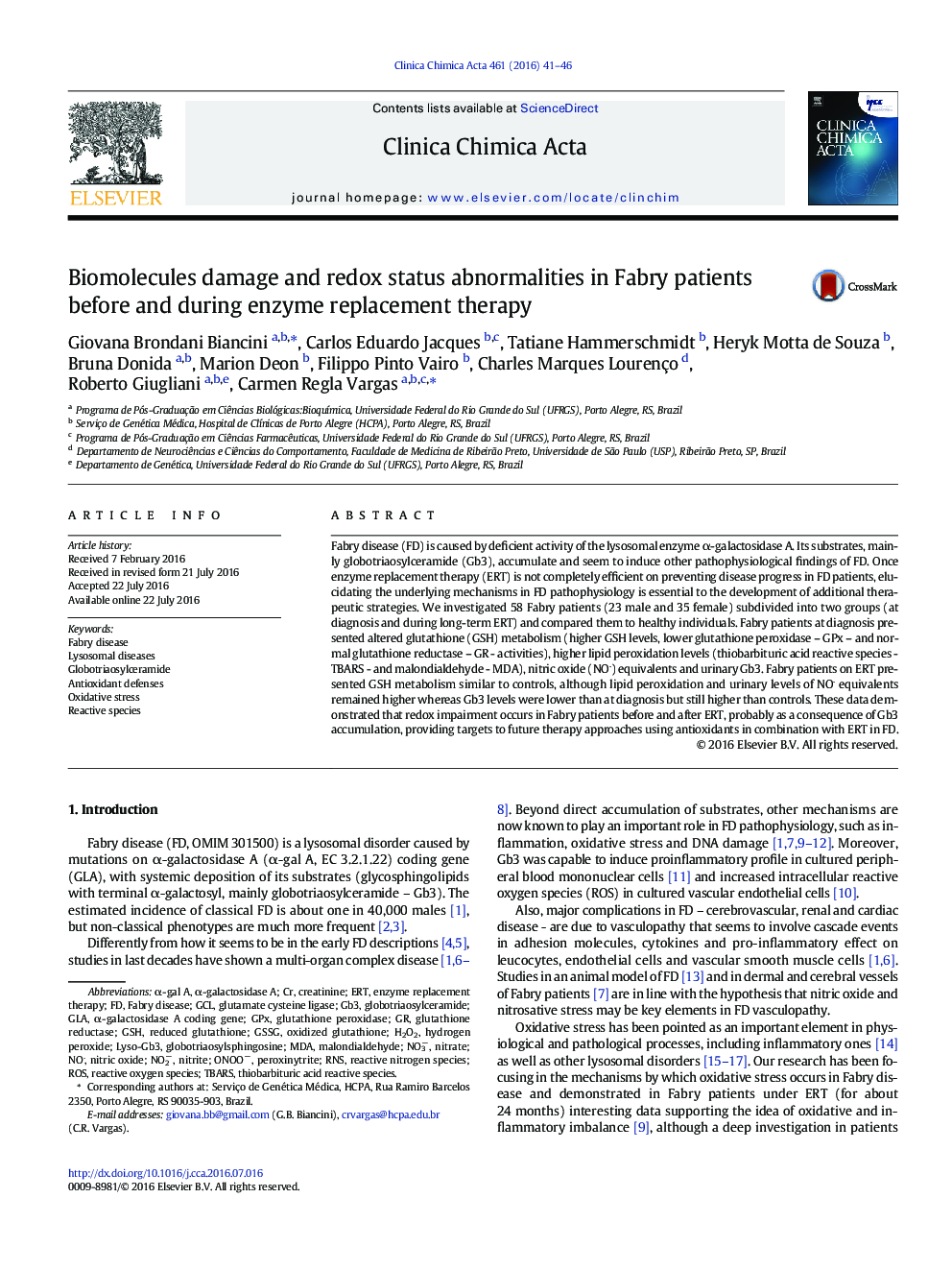| Article ID | Journal | Published Year | Pages | File Type |
|---|---|---|---|---|
| 1965068 | Clinica Chimica Acta | 2016 | 6 Pages |
Abstract
Fabry disease (FD) is caused by deficient activity of the lysosomal enzyme α-galactosidase A. Its substrates, mainly globotriaosylceramide (Gb3), accumulate and seem to induce other pathophysiological findings of FD. Once enzyme replacement therapy (ERT) is not completely efficient on preventing disease progress in FD patients, elucidating the underlying mechanisms in FD pathophysiology is essential to the development of additional therapeutic strategies. We investigated 58 Fabry patients (23 male and 35 female) subdivided into two groups (at diagnosis and during long-term ERT) and compared them to healthy individuals. Fabry patients at diagnosis presented altered glutathione (GSH) metabolism (higher GSH levels, lower glutathione peroxidase - GPx - and normal glutathione reductase - GR - activities), higher lipid peroxidation levels (thiobarbituric acid reactive species - TBARS - and malondialdehyde - MDA), nitric oxide (NO.) equivalents and urinary Gb3. Fabry patients on ERT presented GSH metabolism similar to controls, although lipid peroxidation and urinary levels of NO. equivalents remained higher whereas Gb3 levels were lower than at diagnosis but still higher than controls. These data demonstrated that redox impairment occurs in Fabry patients before and after ERT, probably as a consequence of Gb3 accumulation, providing targets to future therapy approaches using antioxidants in combination with ERT in FD.
Keywords
RNSGLAMDALyso-Gb3α-Gal AGb3GSHGPXTBARSGCLGSSGNO2−NO3−ONOO−ROSα-Galactosidase AHydrogen peroxideenzyme replacement therapyFabry diseaseLysosomal diseasesOxidative stressAntioxidant defensesglutamate cysteine ligasemalondialdehydeNo.Nitric oxideERTH2O2reduced glutathionecreatinineGlobotriaosylsphingosineoxidized glutathioneglutathione reductaseglutathione peroxidaseglobotriaosylceramidereactive nitrogen speciesReactive speciesthiobarbituric acid reactive speciesReactive oxygen species
Related Topics
Life Sciences
Biochemistry, Genetics and Molecular Biology
Biochemistry
Authors
Giovana Brondani Biancini, Carlos Eduardo Jacques, Tatiane Hammerschmidt, Heryk Motta de Souza, Bruna Donida, Marion Deon, Filippo Pinto Vairo, Charles Marques Lourenço, Roberto Giugliani, Carmen Regla Vargas,
